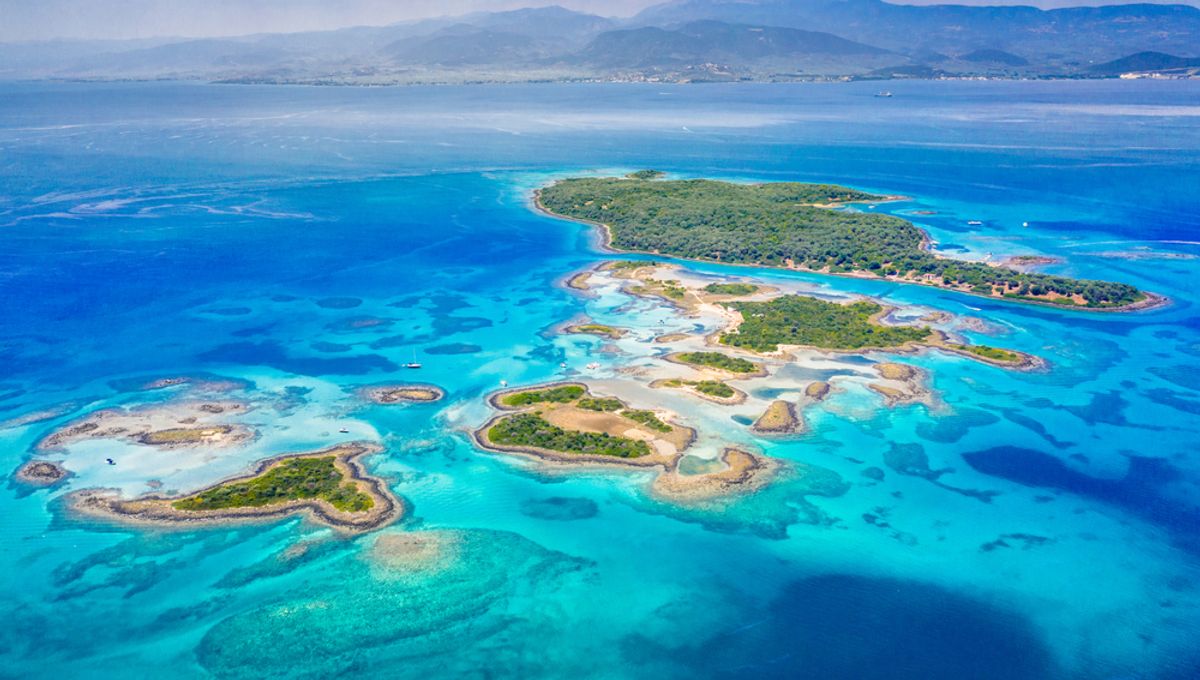
The first intrepid humans to sail the ocean blue may have predated the emergence of Homo sapiens, according to a new analysis of shorelines within the Central Aegean Island Chain (CAIC). Previously, it had been assumed that our ancient ancestors reached these picturesque islands via land bridges, yet the study authors suggest that no such walkways existed when archaic hominids first hopped between the isles.
Despite the fact that sailing requires serious brainpower, evidence from across the globe indicates that extinct human species may have had both the mind and the minerals to conquer the seas. For example, the first hominids are known to have reached the Philippines by around 700,000 years ago and Flores Island in Indonesia as early as a million years ago – well before modern humans existed.
Exactly which species of human first took to the water, however, is still something of a mystery.
To provide new insights into our maritime heritage, the study authors turned their attention to the Cyclades archipelago in the Aegean Sea. Artifacts on islands such Milos have been dated to around half a million years ago, indicating that archaic humans had already reached the Greek Islands by this time.
Until now, scientists had generally agreed that these ancient hominids probably arrived on foot during global glaciations, when sea levels dropped and the islands became connected to the Eurasian mainland. Challenging this theory, the researchers analyzed sea level markers in river deltas across the CAIC, and found that during the ice ages, sea levels fluctuated between 152 and 225 meters (499 and 738 feet) below their current values.
At present, the Ikaria stretch of the Aegean Sea is 355 meters (1,165 feet) deep, while the Myrtoon stretch is 456 meters (1,496) deep. In fact, the entire Aegean is deep enough to have remained a barrier to pedestrians even when sea levels were at their lowest point 450,000 years ago.
Based on this finding, the authors conclude that the Cyclades Archipelago was completely cut off from the mainland at this time, and that any humans who inhabited the islands could only have arrived by crossing the sea.
“The insularity of the islands over the CAIC… in conjunction with the time and space distribution of Lower Paleolithic (LP) and Middle Paleolithic (MP) sites in the Cyclades Islands and in the wider area provides evidence that the hominins had to cross sea-straits to reach the Cyclades Archipelago,” they write.
Taking a closer look at the arrangement of islands, the researchers point out that their proximity to one another means that each can be seen with the naked eye from the adjacent speck of land, “thus providing the perception of easy accessibility.”
“Such a land/seascape created an ideal maritime ‘nursery’ environment for hominins to attempt sea-crossings,” they say. The temptation to hop from one island to the next may therefore have “motivated the archaic hominin to develop the necessary cognitive capabilities such as spatial awareness, way-finding strategies and sea-craft building.”
While the researchers can’t say which human species first learned to sail, they point out that the remains of several different extinct hominids have been found dotted around the Hellenic peninsula. In accordance with this evidence, the study authors speculate that “the CAIC could have been used by H. erectus, H. heidelbergensis and early H. Neanderthalensis as a sea route.”
More broadly, these findings suggest that our ancient ancestors may have sailed as well as walked out of Africa, crossing the Gibraltar Straits as well as the Aegean in order to reach Eurasia.
The research has been published in the journal Quaternary International.
Source Link: Extinct Humans May Have Sailed Across The Aegean Sea 450,000 Years Ago